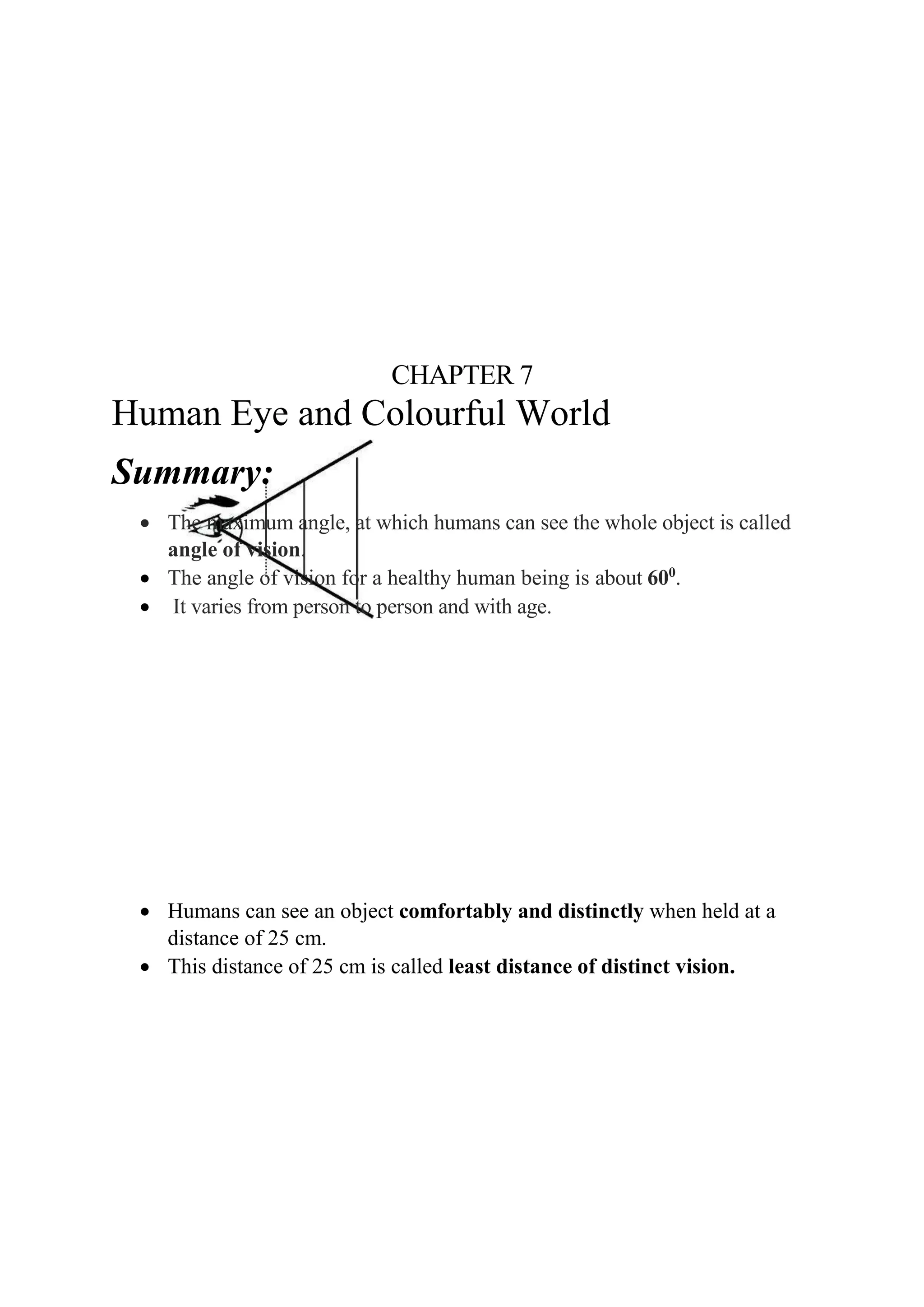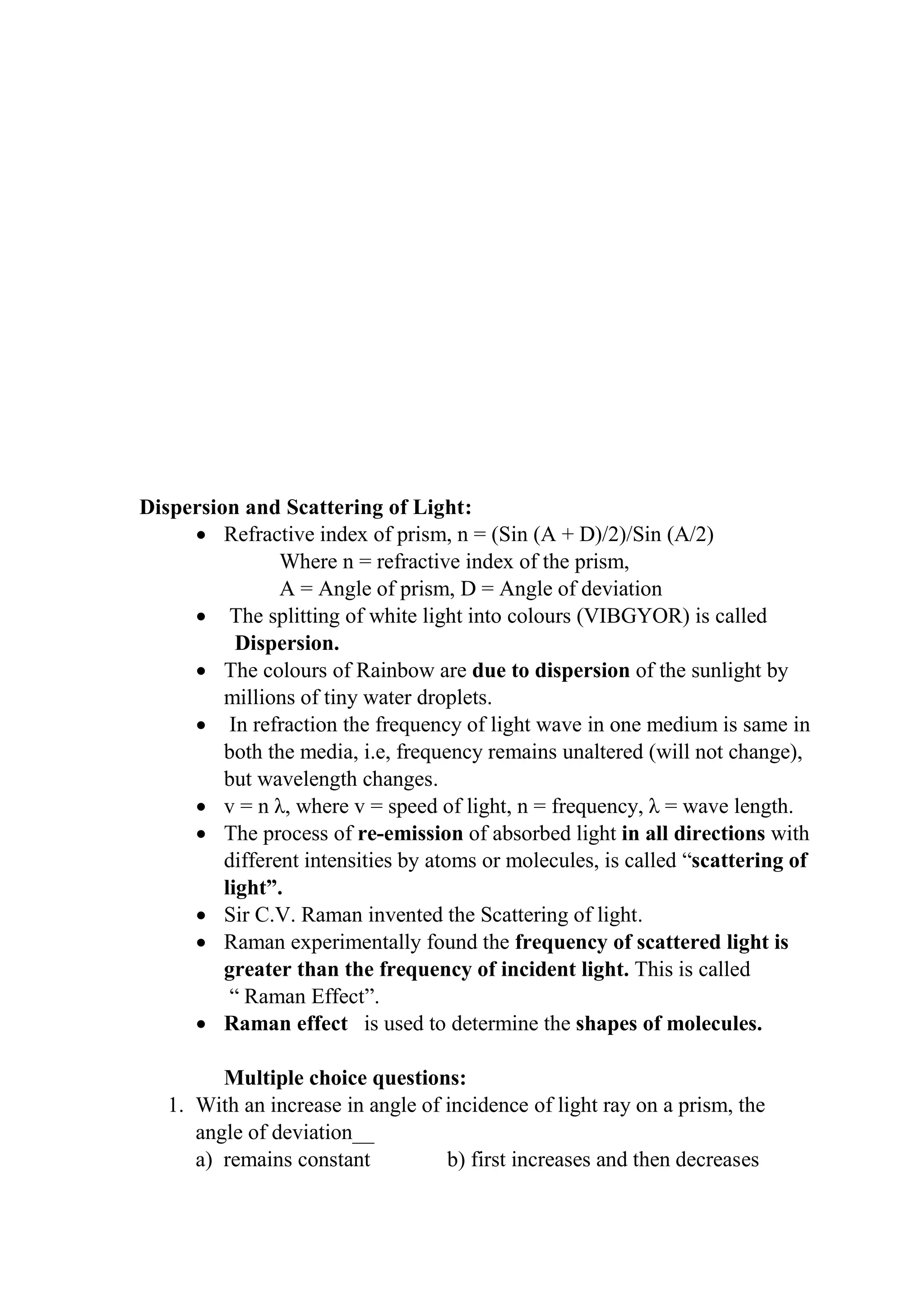The document provides information about the human eye and vision. It discusses the basic anatomy of the eye, including the cornea, iris, lens, retina, and optic nerve. It describes how the lens focuses light onto the retina to form an image and allows for accommodation. Common vision defects like myopia, hyperopia, and presbyopia are also summarized along with how they are corrected using lenses. The document additionally covers topics of dispersion, scattering of light, and the Raman effect.






